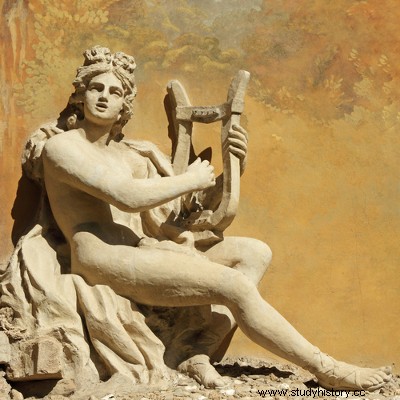
By Me. Cláudio Fernandes
The so-called “Arts Liberals Classics ”, or “As Seven Arts Liberals ”, constituted the model of education during antiquity classical (Greco-Roman) and the Age Average . The term “Liberal”, implied in the title given to such arts, comes from the Latin liber , which means “free”, in the sense of having freedom to choose instruction, to seek education, under the guidance of a master. This was the main characteristic of liberal education until the end of the Middle Ages:the non-compulsory education and the non-framing of it by the state power.
The scheme of the Seven Liberal Arts was divided into Trivium and Quadrivium , the first being composed of the disciplines of logic, grammar and rhetoric; and the second, arithmetic, astronomy, music and geometry. This scheme first appeared during the 9th century AD, under the empire built by Charles Magno , which sought to reorder the culture inherited from the Roman Empire.
However, this organization in two areas referred to the concept of study developed by the Greek mathematician and philosopher Pythagoras from Samos . Pythagoras, like many of his contemporaries, was very interested in obtaining a type of knowledge that would account for the totality of existing things, from the properly human realm (that is, of language, modes of expression and reasoning) to the realm of human beings. (this implied uncovering the “hidden” symbols in the language of nature).
In this sense, the Trivium , logic, grammar and rhetoric, covered the scope of language developed by men, from logical-dialectical reasoning to the grammatical method (intonation, contact with epic poems, fables, text of speakers, etc.). The Quadrivium continued these studies, providing the student with tools to understand the organization of the natural world and the symbolism of numbers. Geometric shapes, calculations (theorems, etc.) of phenomena of the physical and astronomical world, as well as the knowledge of the seven musical notes, were studied by the subjects of the Quadrivium .
As educator José Monir Nasser notes, there was also a singular analogy between the Seven Liberal Arts and the cosmic order of the seven planets visible to the naked eye:[...] “ analogy with the symbolic meaning of the planets, relating the rhetoric with Venus; the grammar with the Moon; logic with Mercury; arithmetic with the Sun; music with Mars; geometry with Jupiter; and astronomy with Saturn”. (Nasser, José Monir. To understand the Trivium. In:Joseph, Miriam. The Trivium:the liberal arts of logic, grammar and rhetoric. São Paulo:É Realizações, 2008. p.15)
This model of liberal education was also infused in Universities Medieval , and the scholastic method , in which personalities such as São Tomas from Aquino , followed the Trivium boards and the Quadrivium . One of the main medieval exponents of the method of liberal education was Hugo from St Victor , with his work Didascalicon .
